The Cook's Illustrated Cookbook (191 page)
Read The Cook's Illustrated Cookbook Online
Authors: The Editors at America's Test Kitchen
Tags: #Cooking

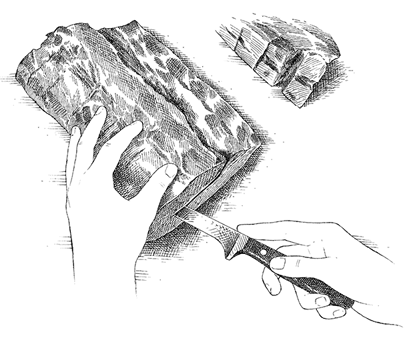
1.
With fat side of roast down, slice through center of entire length of meat, stopping 1 inch shy of edge. Spread meat flat.
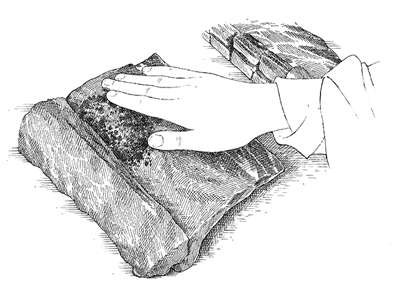
2.
Rub one-third of garlic-rosemary paste mixture in even layer on one side of cut, leaving ¹⁄
2
inch on each end bare.
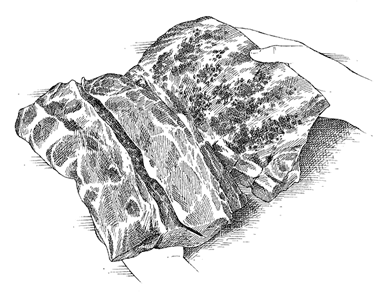
3.
Spread remaining garlic-rosemary paste mixture evenly along bones from where meat was cut, leaving ¹⁄
2
inch on each end bare.
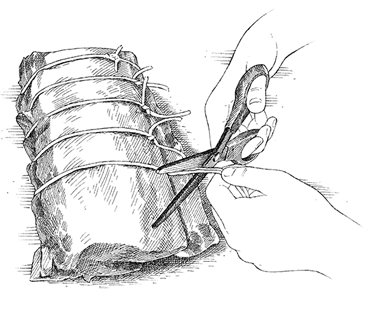
4.
Fold meat back together and tie meat on bones exactly from where it was cut with 7 individual lengths of kitchen twine.
![]() WHY THIS RECIPE WORKS
WHY THIS RECIPE WORKS
A fresh herb crust is a great way to enliven a boneless pork roast; we just needed a way to keep the crust from falling off. Starting with the roast itself, we knew that both brining it and browning it would be crucial for the best flavor. For maximum herb flavor, we cut a single horizontal pocket across the middle of the roast that could hold a good quantity of herb paste. With the pork’s internal herb flavor guaranteed, we went to work on the crust, using the same herb paste we had used to fill the pocket (along with bread crumbs, Parmesan, and some minced shallot); to keep it attached to the outside of the roast, we found we needed to score a crosshatch pattern into the fat cap, giving our herb crust something to grip.
See “PREPARING HERB-CRUSTED PORK ROAST” illustrations that follow recipe.
SERVES 4 TO 6
If the pork is enhanced (injected with a salt solution), do not brine in step 1, and season with salt in step 4. Note that you should not trim the pork of its layer of fat. Do not substitute dried thyme for fresh or the herb crust will be dry and dusty tasting. The roasting time will vary widely depending on the thickness of the meat.
1 | (2¹⁄ |
Salt and pepper | |
¹⁄ | cup sugar |
1 | slice hearty white sandwich bread, torn into pieces |
1 | ounce Parmesan or Pecorino Romano cheese, grated (¹⁄ |
1 | shallot, minced |
¹⁄ | cup plus 2 teaspoons olive oil |
¹⁄ | cup packed fresh parsley or basil |
2 | tablespoons minced fresh thyme |
1 | teaspoon minced fresh rosemary or ¹⁄ |
1 | large garlic clove, minced |
1.
Lightly score fat cap on pork, making ¹⁄
4
-inch crosshatch pattern. Create pocket by inserting knife ¹⁄
2
inch from end of roast and cutting along side of pork stopping ¹⁄
2
inch shorter of other end. Pull open roast and use gentle strokes to cut deeper pocket. Dissolve ¹⁄
4
cup salt and sugar in 2 quarts cold water in large container. Submerge pork in brine, cover, and refrigerate for 1¹⁄
2
to 2 hours.
Remove roast from brine and thoroughly pat dry with paper towels.
2.
Meanwhile, adjust oven rack to lower-middle position and heat oven to 325 degrees. Pulse bread in food processor until coarsely ground, about 16 pulses (you should have 1 cup crumbs). Transfer crumbs to medium bowl (do not wash food processor bowl) and add 2 tablespoons Parmesan, shallot, 1 tablespoon oil, ¹⁄
8
teaspoon salt, and ¹⁄
8
teaspoon pepper. Using fork, toss mixture until crumbs are evenly coated with oil.
3.
Add parsley, thyme, rosemary, garlic, remaining 6 tablespoons Parmesan, 3 tablespoons oil, ¹⁄
8
teaspoon salt, and ¹⁄
8
teaspoon pepper to now-empty food processor and process until smooth, about 12 pulses. Transfer herb paste to bowl.
4.
Spread ¹⁄
4
cup herb paste inside roast and tie. Season roast with pepper.
5.
Heat remaining 2 teaspoons oil in 12-inch skillet over medium-high heat until just smoking. Add roast, fat side down, and brown on all sides, 8 to 10 minutes, lowering heat if fat begins to smoke. Transfer roast to wire rack set in aluminum foil–lined rimmed baking sheet.
6.
Snip and remove twine from roast; discard twine. Spread remaining herb paste over roast and top with bread-crumb mixture. Transfer baking sheet with roast to oven and cook until thickest part of roast registers 145 degrees, 50 to 75 minutes. Remove roast from oven and let rest for 10 minutes. Using spatula and meat fork, transfer roast to carving board, taking care not to squeeze juices out of pocket in roast. Cut roast into ¹⁄
2
-inch-thick slices and serve.
TO MAKE AHEAD:
Roast can be brined, stuffed, and tied 1 day ahead, but don’t prepare bread-crumb topping until you are ready to cook.
Substitute 1 tablespoon minced garlic for shallot in bread-crumb mixture, replace rosemary with 4 teaspoons whole grain mustard and 1 tablespoon toasted caraway seeds, and reduce oil in step 3 to 2 tablespoons.
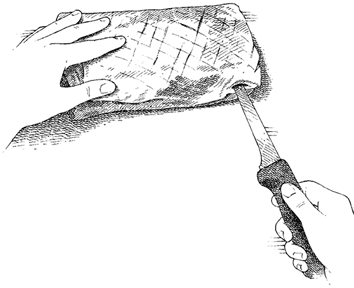
1.
Starting ¹⁄
2
inch from end of roast, insert knife into middle of roast, with blade parallel to counter.
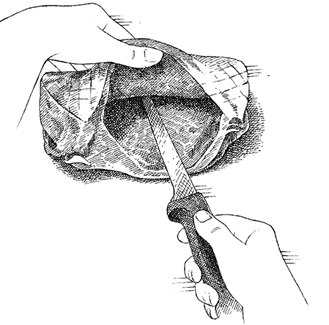
2.
Cut along side of pork, stopping ¹⁄
2
inch short of other end. Pull open roast and use gentle strokes to cut deeper pocket.
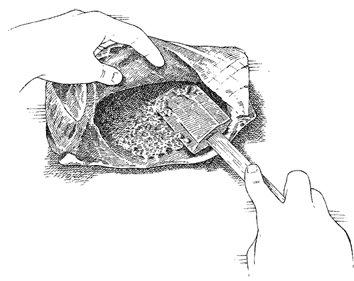
3.
Spread ¹⁄
4
cup herb paste evenly into pocket, using spatula and fingers to make sure paste reaches corners of pocket.
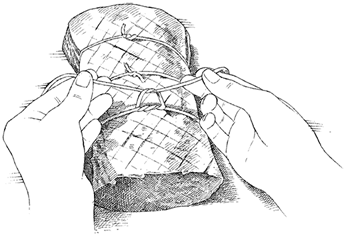
4.
Return roast to original shape and tie at even intervals along its length with 3 pieces of kitchen twine.
